History, Art and Culture - 3 | Current Affairs & Hindu Analysis: Daily, Weekly & Monthly - UPSC PDF Download
Pandavula Gutta and Ramgarh Crater as Geo-Heritage Sites
Why in News?
Pandavula Gutta, an ancient geological wonder that predates the Himalayan ranges, has been officially recognized as the only Geo-heritage site in Telangana. Additionally, the Rajasthan government has designated the Ramgarh Crater in Baran district as a geo-heritage site. This acknowledgment signifies an important step in safeguarding the geological heritage of these regions.
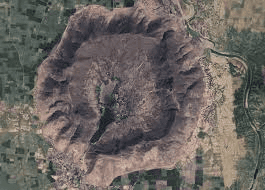
What are the Key Facts About Pandavula Gutta?
- Pandavula Gutta, located in the Jayashankar Bhupalpally district of Telangana, is a geological marvel.
- This site is abundant in rock shelters and has evidence of human habitation dating back to the Mesolithic period (around 10,000 B.C. to 8,000 B.C.).
- The area features Palaeolithic cave paintings that date from 500,000 BCE to 10,000 BCE, providing insights into prehistoric life.
- The cave art showcases various wildlife, including depictions of bison, antelope, tigers, and leopards, as well as geometric symbols such as swastikas, circles, squares, and weapons.
- These paintings incorporate colors like green, red, yellow, and white, creating vivid representations of past life.
- The unique topography of Pandavula Gutta attracts rock climbing enthusiasts from various regions.
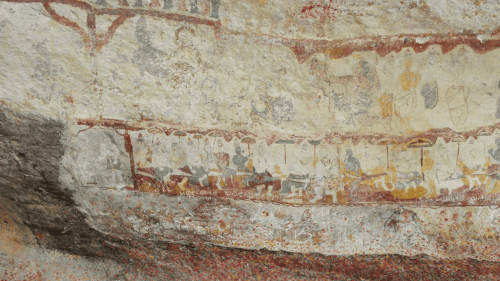
What are the Key Facts About Ramgarh Crater?
- Ramgarh Crater, located in Rajasthan, was formed approximately 165 million years ago due to a meteor impact.
- This crater, with a diameter of about 3 kilometers, plays a vital role in maintaining the ecological balance and biodiversity of the region.
- It is recognized as a Ramgarh Conservation Reserve under the Wildlife (Protection) Act of 1972, emphasizing the importance of preserving its ecological and cultural significance.
- The presence of the Pushkar Talab complex within the crater is acknowledged as wetlands, protected under the Wetland (Conservation & Management) Rules of 2017.
Bhojshala Temple-Kamal Maula Mosque Complex
Why in news?
The Madhya Pradesh High Court has instructed the Archaeological Survey of India (ASI) to undertake a scientific survey of the Bhojshala Temple-Kamal Maula Mosque complex located in Dhar district. This initiative aims to clarify the nature and character of the structure, resolving existing confusion surrounding it.
Objective:
- To clearly define the characteristics of the complex.
- To demystify the historical significance of the site.
Constitution of an Expert Committee:
- An expert committee will be formed by ASI to conduct a thorough scientific investigation.
- This will include carbon dating to determine the age of various structures.
- Survey and excavation will use the latest methodologies.
- A report is expected to be submitted within six weeks.
Petitioners:
- The Hindu Front for Justice has filed a petition in court.
- They seek to restore the original status of the complex for Hindus.
- The petition argues that the Kamal Maula Mosque was built during Alauddin Khilji's reign in the 13th-14th centuries by repurposing materials from earlier Hindu temples.
Present Status:
- According to a 2003 agreement, Hindus are allowed to perform puja on Tuesdays, while Muslims offer namaz on Fridays.
- Hindus regard the complex as a temple dedicated to Goddess Vagdevi (Saraswati), while Muslims view it as the tomb of Sufi saint Kamal Maula.
Bhojshala Temple-Kamal Maula Mosque Complex:
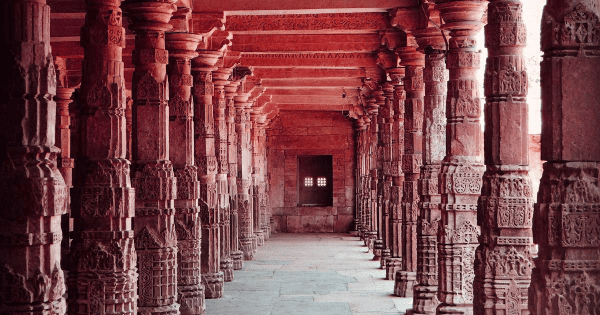
An ASI-Protected Site:
- The complex is recognized as a protected monument by the ASI.
- It is a site of contention, claimed by both Muslims and Hindus.
Location:
- Situated in the historical circular city of Dhar in Madhya Pradesh.
Built By:
- Originally believed to be a temple dedicated to Goddess Saraswati, constructed by the Paramara King Bhoja around the 11th Century AD.
- Dhar was historically one of the capitals of the Malwa region.
- King Bhoja was a renowned patron of art and literature and is credited with establishing a school now known as Bhojashala within the complex.
Delhi Sultanate:
- By the early 14th century, Malwa was under the rule of the Delhi Sultanate.
- A hypostyle mosque was subsequently constructed using remnants from the fallen temples.
- After the death of Sufi saint Kamal-al-Din in 1331 CE, a tomb was added adjacent to the mosque, leading to the site being known as Kamal Maula mosque.
- This indicates that the mosque was built prior to 1331 CE.
Architecture of Bhojshala Temple-Kamal Maula Mosque Complex
Pillars:
- The complex features numerous sandstone pillars of diverse designs, dating back to the 11th and 12th centuries.
- During mosque construction, these pillars were reused and stacked to elevate the ceiling height, mirroring building techniques found in Ajmer and the Qutb complex in Delhi.
Style of Construction:
- Domes of trabeate construction, embellished with intricate cusping and lotus motifs, were incorporated later.
- The mihrab and minbar, added in the 1400s, were commissioned by the rulers of Mandu during the Malwa Sultanate.
Inscriptions:
- The site includes various stone panels featuring inscriptions in Sanskrit and Prakrit affixed to its walls and floors.
- These inscriptions encompass Sanskrit grammar rules and esoteric diagrams.
- Notably, an inscription on the pedestal (bhojshala) references a statue of Vagdevi (Sarasvatī), indicating that the Sarasvati at Dhar is the Jain representation of this goddess.
Temple Discoveries Highlight Chalukya Expansion
Why in News?
Archaeologists from the Public Research Institute of History, Archaeology, and Heritage (PRIHAH) have uncovered two ancient temples from the Badami Chalukyan period, along with a rare inscription, in Mudimanikyam village of Nalgonda district, Telangana.
What are the Major Highlights of the Recent Excavation?
Temples:
- The two temples, located at the village's edge, date back to between 543 AD and 750 AD, during the Badami Chalukyas' rule.
- They exhibit distinct architectural styles, merging Badami Chalukyan and Kadamba Nagara styles in the Rekha nagara format.
- One temple features a panavattam (base of a Shiva lingam) in the sanctum sanctorum.
- The other temple contained a recovered idol of Vishnu.
Inscription:
- Among the discoveries is an inscription named 'Gandaloranru', believed to date back to the 8th or 9th Century AD.
Significance:
- Previously, the Jogulamba temples at Alampur and the submerged sites of Yeleswaram were thought to be the farthest extent of Badami Chalukya influence.
- This new finding significantly broadens the known territorial limits of the Chalukya kingdom.
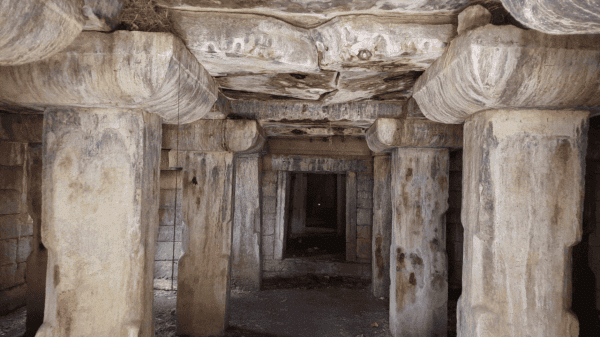
What are the Key Features Related to the Chalukya Dynasty?
About:
- The Chalukya dynasty ruled significant areas in southern and central India from the 6th to the 12th centuries.
- It included three main branches: the Chalukyas of Badami, the Eastern Chalukyas, and the Western Chalukyas.
- The Chalukyas of Badami, originating from Vatapi (modern-day Badami in Karnataka), governed from the early 6th century until the mid-8th century, reaching their peak under Pulakeshin II.
- After Pulakeshin II, the Eastern Chalukyas emerged as an independent kingdom in the eastern Deccan, centered around Vengi (now in Andhra Pradesh) until the 11th century.
- The rise of the Rashtrakutas in the 8th century overshadowed the Chalukyas of Badami in the western Deccan.
- Their legacy was continued by the Western Chalukyas, who ruled from Kalyani (modern Basavakalyan in Karnataka) until the late 12th century.
Foundation:
- Pulikesin I (c. 535-566 CE) is credited with fortifying a hill near Badami, establishing the Chalukya dynasty's foundation.
- The city of Badami was officially founded by Kirtivarman (566-597), which became the center of Chalukyan power and culture.
Polity and Administration:
- The Chalukyas implemented a structured administrative system, dividing their realm into political units for effective governance.
- These divisions included Vishayam, Rastram, Nadu, and Grama.
Religious Patronage:
- The Chalukyas were prominent patrons of both Saivism and Vaishnavism.
- In addition to mainstream Hinduism, they supported heterodox sects such as Jainism and Buddhism, reflecting their commitment to religious diversity.
- Ravikirti, the poet-laureate of Pulikesin II, was a Jain scholar.
- According to the traveler Hiuen Tsang, numerous Buddhist centers existed in Chalukya territory, housing over 5000 followers of the Hinayana and Mahayana sects.
Architecture:
- The Chalukyas pioneered the technique of constructing temples using soft sandstones in the Deccan region.
- Their temples can be categorized into two types: excavated cave temples and structural temples.
- Badami is renowned for both types, while Pattadakal and Aihole are famous for their structural temples.
Literary:
- Chalukya rulers used Sanskrit for official inscriptions, showcasing their dedication to classical literature and language.
- Despite the prominence of Sanskrit, they also recognized the importance of regional languages like Kannada, acknowledging them as the language of the people.
Painting:
- The Chalukyas adopted the Vakataka style in painting.
- Notable paintings can be found in a cave temple dedicated to Vishnu in Badami.
GI Tag to Majuli masks, Manuscript and Narasapur Crochet Lace Craft
Why in news?
The traditional crochet lace craft from Narasapur, Andhra Pradesh, has been awarded a Geographical Indications (GI) tag to protect its unique identity against the competitive threat of machine-made lace from China. Similarly, Majuli's masks and manuscript paintings in Assam have received GI recognition, which enhances their cultural significance and helps in preventing their decline. The purpose of these GI tags is to revitalize and promote traditional crafts, ensuring their legacy and heritage are preserved.
What are the Key Highlights About Narasapur Crochet Lace Craft?
- The Narasapur Crochet Lace Craft originated in 1844 and has managed to survive significant challenges, including the Indian famine of 1899 and the Great Depression in 1929.
- During the early 1900s, over 2,000 women were engaged in lace crafting within the Godavari region, underscoring its cultural importance.
- Artisans create intricate lace artifacts by transforming thin cotton threads using delicate crochet needles of various sizes.
- The craft involves a single crochet hook to create loops and interlocking stitches, resulting in exquisite lace patterns.
- Narasapur's handmade crochet industry produces a wide range of lace products, including garments, home furnishings, and various accessories such as doilies, pillow covers, cushion covers, bedspreads, table runners, tablecloths, handbags, caps, tops, stoles, lampshades, and wall hangings.
- These crochet lace products are exported globally, reaching markets in the UK, USA, and France.
Geographical Indication (GI) Tag:
- The Department of Promotion of Industry and Internal Trade (DPIIT) under the Ministry of Commerce and Industry has registered the craft in the Geographical Indications Registry (GIR), confirming that it is geographically limited to 19 mandals in West Godavari and Dr. B.R. Ambedkar Konaseema districts.
- Narasapur and Palacole serve as the main trade centers for lace products in the West Godavari district, while Razole and Amalapuram in the Konaseema region are also recognized for this craft.
Challenges Faced by Narasapur Artisans:
- Since the Covid-19 pandemic, the craft market has stagnated, leading to a decline in new orders and production levels.
- Although more than 15,000 women are affiliated with the craft, only about 200 are actively engaged in regular production.
- Machine-made lace products from China have significantly impacted the market, threatening the demand for Narasapur's handmade lace.
What are Majuli masks and Majuli Manuscript Painting?
- Majuli masks are intricately handmade masks created using traditional techniques.
- These masks are traditionally used to portray characters in bhaonas, which are theatrical performances conveying religious messages, rooted in the neo-Vaishnavite tradition established by the 15-16 century saint Srimanta Sankardeva.
- Majuli masks can represent various figures including gods, goddesses, demons, and animals, with characters like Ravana, Garuda, Narasimha, Hanuman, and Varaha being commonly depicted.
- The masks are crafted from diverse materials such as bamboo, clay, dung, cloth, cotton, and wood, and can range in size from covering just the face to enveloping the entire head and body of the wearer.
- Contemporary practitioners are modernizing the mask-making process, expanding beyond traditional sattras (monasteries) to adapt to modern contexts.
- Majuli, home to 22 sattras, serves as a significant center for these cultural practices, with the mask-making tradition primarily found in four sattras: Samaguri Sattra, Natun Samaguri Sattra, Bihimpur Sattra, and Alengi Narasimha Sattra.
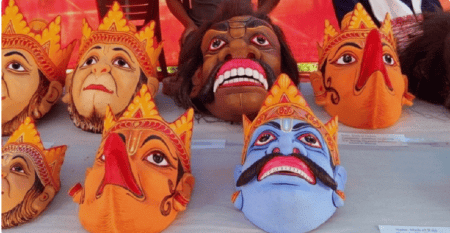
- Majuli's manuscript paintings are a form of religious art intricately connected to the island's Vaishnavite culture, centered around worship.
- One of the earliest examples of this art form is attributed to Srimanta Sankardeva, illustrating the Adya Dasama of the Bhagwat Purana in Assamese style.
- This art form continues to be practiced in every sattra within Majuli, drawing inspiration from the Pala school of painting.
- The Pala art style, which flourished during the Pala Empire of eastern India between the 8th and 12th centuries, is characterized by its vibrant colors, intricate details, and focus on religious themes.
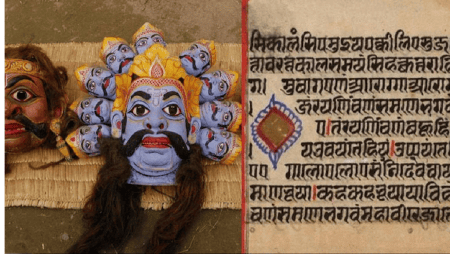
Lachit Barphukan
Why in the news?
Prime Minister recently unveiled the "Statue of Valour", a 125-foot bronze statue of Ahom general Lachit Barphukan in Jorhat, Assam.
About Lachit Barphukan (1622 - 1672)
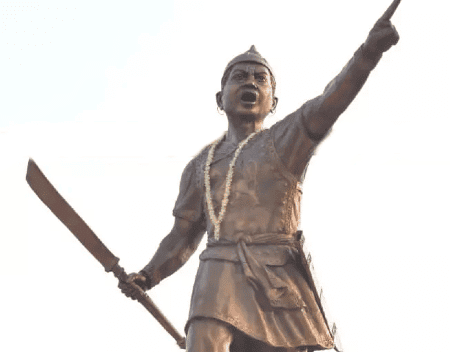
- Place of Birth: Charaideo district of Assam.
- Mother: Kunti Moran
- Father: Momai Tamuli Barbarua
- He served as the first Barbarua (military and judicial head) in the Ahom Kingdom.
- As the commander-in-chief of the Ahom army, he achieved significant victories against the Mughals during the reigns of Emperor Jahangir and Shah Jahan.
- He established the Paik practices, which involved a system of forced labor within the Ahom kingdom.
- Clan: Barphukan belonged to the Lukhurakhun clan, part of a diverse clan system in the Ahom kingdom.
Role as Military Chief:
- King Swargadeo Chakradhwaj Singh appointed Lachit Barphukan to his military authority.
- Under his command, the Ahom forces won the Battle of Saraighat.
Battle of Saraighat (1671):
- Background: In 1662, Mir Jumla led the Mughal Army to defeat the Ahom kingdom, incorporating it into a tax-based state.
- In 1669, Mughal forces commanded by Ram Singh annexed Guwahati following the Battle of Alaboi.
- Location: The battle occurred on the Brahmaputra River at Saraighat, near the city of Guwahati in present-day Assam.
- Combatants: This battle primarily involved naval forces, with the Ahom army led by Lachit Barphukan and the Mughals commanded by Ram Singh.
- Outcome: Lachit Barphukan's forces decisively defeated the larger Mughal army, halting Mughal ambitions to conquer the Ahom kingdom.
- Significance: This victory effectively ended the Mughal advance into Assam and the broader Northeast India region.
About Ahom Kingdom (1228 to 1826)
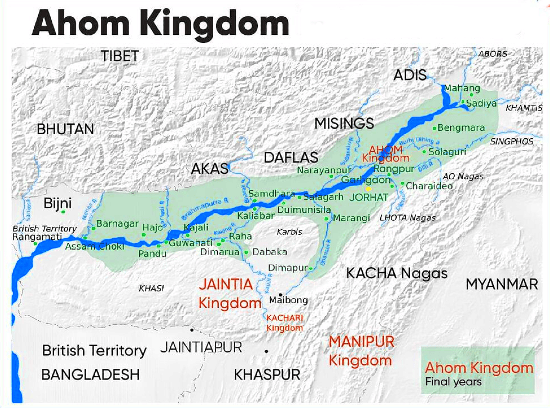
- Founder: Sukaphaa, a Shan prince from Mong Mao, established the kingdom after migrating to Assam.
- Establishment: The Ahoms arrived in the Brahmaputra valley from present-day Myanmar in the 13th century.
- Expansion of territory: In the 16th century, under Suhungmung's rule, Ahoms expanded by capturing territories from the Chutiya and Koch-Hajo kingdoms.
- Capital: Charaideo, situated east of Guwahati, was the first capital of the Ahom dynasty.
- The Ahom society was organized into clans or khels, which often governed multiple villages.
- Peasants were allocated land by their village communities, and even the king required community consent to revoke such land.
- Population redistribution occurred, leading to the fragmentation of Ahom clans as people were moved from densely populated to sparsely populated areas.
- Suppression of Older Political Systems: The Ahoms replaced the existing bhuiyans (landlords) with their own governance structure.
- Forced Labor System – Paiks: The Ahom state relied on forced laborers called Paiks, with villages required to provide workers on a rotational basis.
- Centralized Administration: By the mid-17th century, the administration had become highly centralized.
- The Council of Ministers was supported by a group referred to as Patra Mantris.
- Foremost Patra Mantris included the Great Gohains (Buragohain, Borgohain, and Barpatragohain).
- Key officials included Barbarua (military and judicial head) and Barphukan (military and civil head), with Barphukan's role akin to that of a Viceroy.
- Artisans: The Ahom region had a limited number of artisan castes, leading to a reliance on artisans from neighboring kingdoms.
- New agricultural practices: The Ahoms introduced innovative rice cultivation techniques.
- Mandatory military service: Almost all adult males were required to serve in the army during times of war.
- Military Tactics: Strategies included deploying spies to surveil enemy movements and employing guerrilla warfare tactics.
- A class of officials known as Kataki served as messengers within enemy territory.
- Naval Strength: The navy formed a crucial component of the Ahom military system.
- Military Divisions: The military included an elephant cavalry commanded by an officer named Hatibaruah.
- Initially, the Ahoms worshipped their tribal deities.
- During the reign of Sib Singh (1714-1744), Hinduism gained prominence as the dominant religion.
- About: Charaideo Maidams are mounds that contain the remains of royalty from the Ahom dynasty, located along the foothills of the Patkai range.
- Lachit Maidam: This specific site contains the remains of Lachit Barphukan and was constructed in 1772 by Swargadeo Udayaditya Singha at Hoolungapara near Jorhat.
- World recognition: The Charaideo Maidams are often referred to as the Pyramids of Assam and are included in UNESCO's tentative list of World Heritage sites.
- Artists: Poets and scholars received land grants to promote cultural development.
- Buranjis: This genre of historical records of the Ahom dynasty was initially written in the Tai-Ahom language but later produced in Assamese.
- Translations of Sanskrit works: Significant texts from Sanskrit were translated into the local language, enhancing cultural accessibility.
- The Ahom dynasty's reign concluded with the Burmese invasion of Assam and the subsequent annexation by the British East India Company, formalized by the Treaty of Yandaboo in 1826.
|
38 videos|5288 docs|1117 tests
|
















